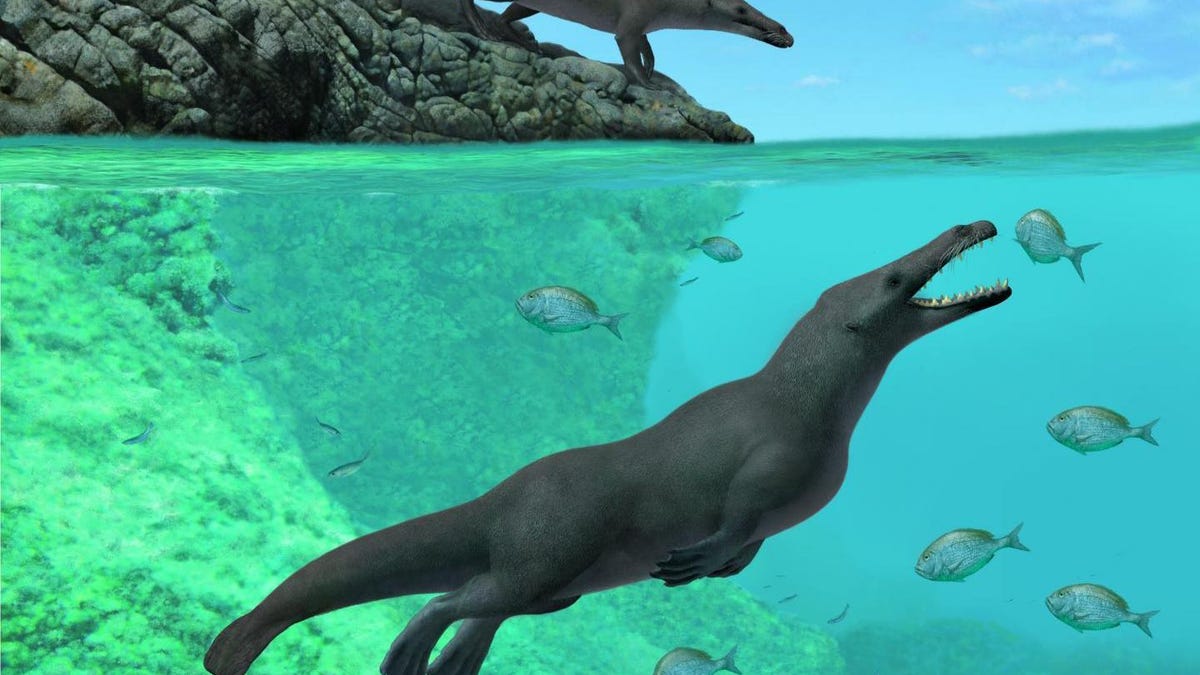Oddball ancient whale had four legs, hooves on its toes
A skeleton discovered off the coast of Peru is an important piece in understanding the puzzle of early whales.
It sounds like someone created an animal by pulling anatomical parts out of a hat. Researchers discovered an ancient whale skeleton in Peru that has four legs, webbed feet and hooves on its toes.
The unusual find is giving scientists clues to how the ancestors of modern whales reached the Americas, and what they looked like when they got there.
The Natural History Museum in the UK describes the animal as a "semi-aquatic proto-whale known as a protocetid." The skeleton dates to the middle Eocene, 42.6 million years ago.
This illustration shows the swimming and walking positions of Peregocetus pacificus.
The scientists who discovered the creature published their findings Thursday in the journal Current Biology. They named the animal Peregocetus pacificus, meaning "the traveling whale that reached the Pacific Ocean."
The fossil record has already revealed that whales and dolphins can trace their ancestry back more than 50 million years to four-legged land animals in south Asia. But paleontologists have puzzled over how early whales spread out across the globe.
"This is the first indisputable record of a quadrupedal whale skeleton for the whole Pacific Ocean, probably the oldest for the Americas and the most complete outside India and Pakistan," says Olivier Lambert of the Royal Belgian Institute of Natural Sciences, a co-author of the study on the animal.
The well-preserved fossil specimen shows it had a long tail and four legs with hooved toes that were likely webbed like an otter's. It could swim as well as walk on land and measured about 13 feet (4 meters) long.
"The features of the skeleton and its position in the whale family tree indicate that the most likely dispersal route of early whales to the Americas was from North Africa via the South Atlantic, where the distance between the African and South American continents was half what it is today," says Travis Park, a postdoctoral fellow at the Natural History Museum.
The four-legged fossil is a long way from our current-day whales, but its journey through time writes a fascinating new chapter in the history of these iconic marine mammals.
Originally published at 9:53 a.m. PT.


